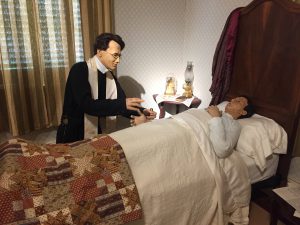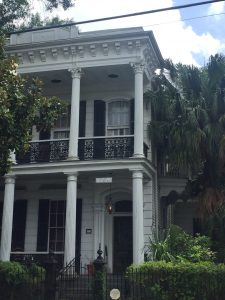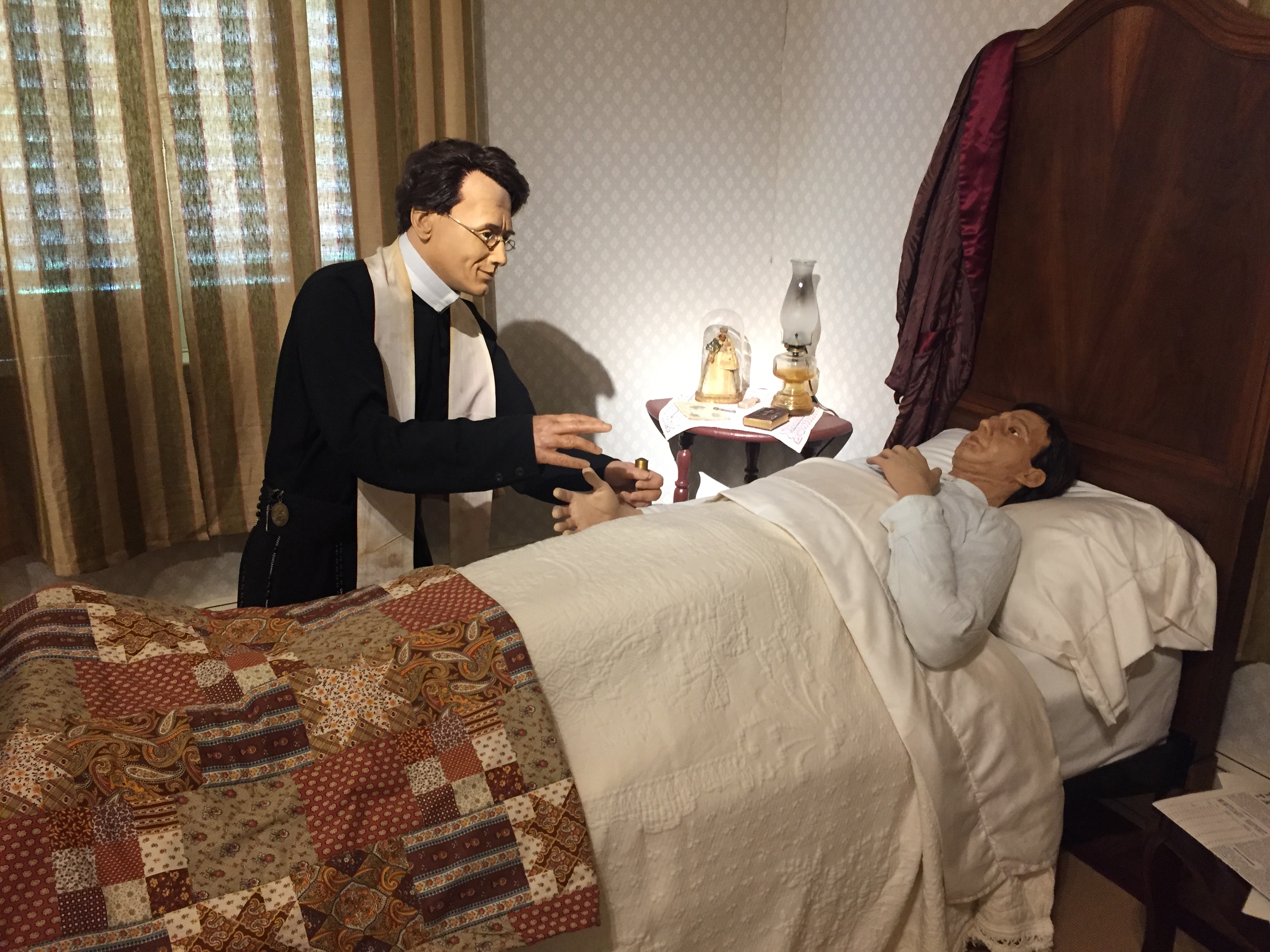Since arriving in New Orleans, I’ve been jolted into déjà vu brought on by the buildings I pass in the streetcar, most of them houses and churches. These houses are breathtaking: they sit large and lofty on green lawns. The houses are a few levels high with thick columns that reach down and create hollowed out porches, occasionally populated with stark white rocking chairs and hanging plants. They look like plantation houses, and the history that accompanies them is a nod to how its presence is preserved in the architecture. The second thing you notice while on the streetcar is the abundance of churches. This points to the preservation of religion, Christianity in particular. Throughout history, the spread of Christianity has been violent and paternalistic. It takes on a different meaning now, especially in relation to Blackness and the creation of African-American identities as they exist now and how they are imagined in the past and in the future. How has Christianity been adopted in Black communities as a way to look towards the future? How do we imagine an afterlife?
2018 marks the New Orleans Tricentennial, a testament to the city’s survival. My research catalogues this through an exploration of what remains: how orature and architecture work to preserve the past through a look at the religious practices in New Orleans. I’m starting with Denise Augustine, a regaled St. Louis Cemetery tour guide I met last year. Denise Augustine is a historian: she knows textbook history, personal history, and a far-reaching community based history that she plays an active role in preserving. In her realm of influence, history is told and preserved through the spoken word and the man made structures intended to outlast us. Here, there are forces that counteract the proposed permanence of brick and mortar. New Orleans has known rising waters accompanying the threat of climate change, hurricanes, and floods that cause structures to degrade. People are buried in above ground tombs to counteract yearly flooding. Many cemeteries have undergone expensive restoration efforts, especially where drainage is concerned. The community adapts.
I’ve started to contact the many churches in my area including the St. Charles Presbyterian, Memorial United Methodist Church, and the First House of Prayer Baptist Church. I will be conducting further research through interviews and the archives and records office. I also plant to reach out to Save Our Cemeteries for information about the extensive efforts to preserve the city’s cemeteries and other landmarks over the years, as well as to shed light onto upcoming renovation projects in light of the tricentennial.
My three days in New Orleans have been nothing short of an emotional rollercoaster, and I am so excited to start digging into the work ahead of me.



